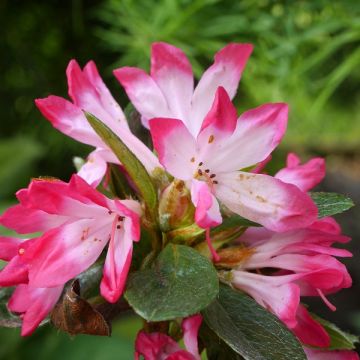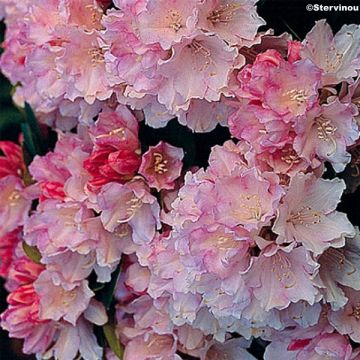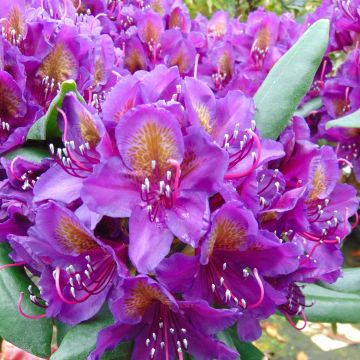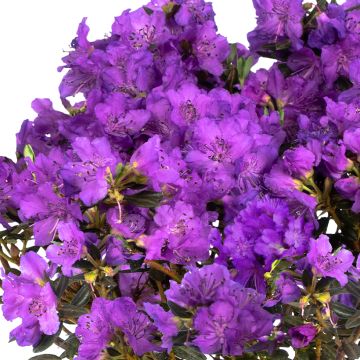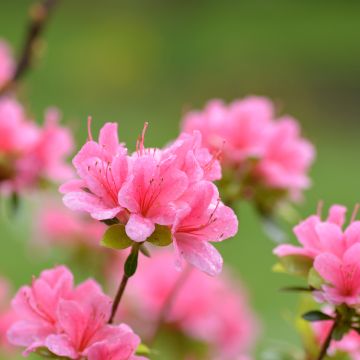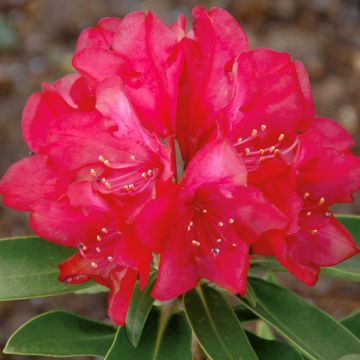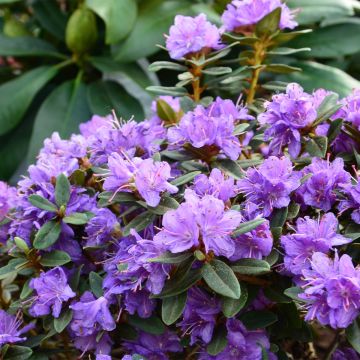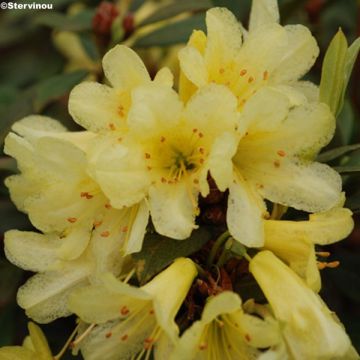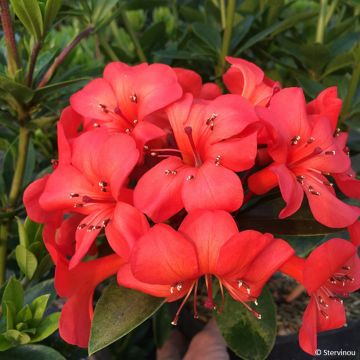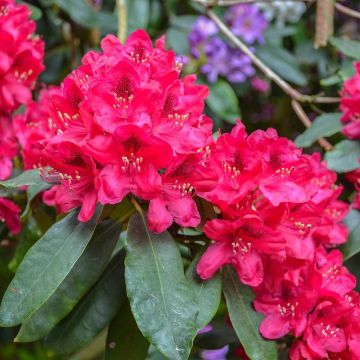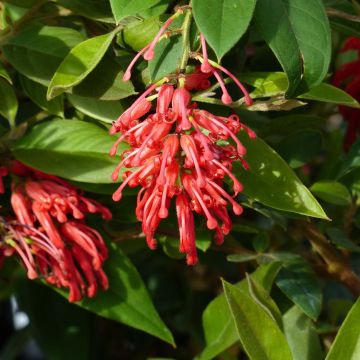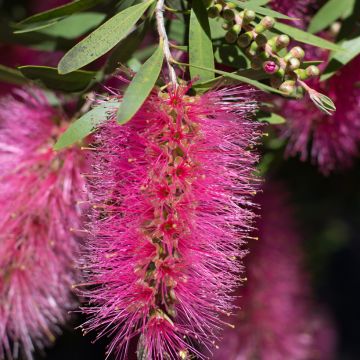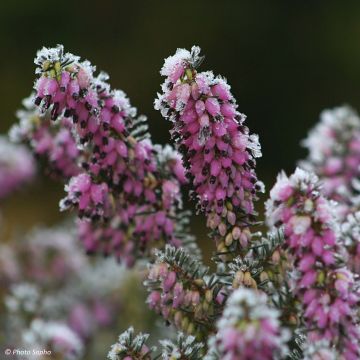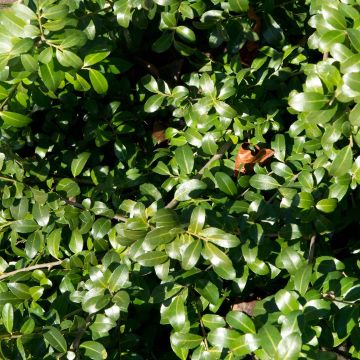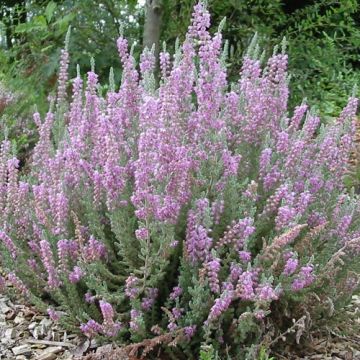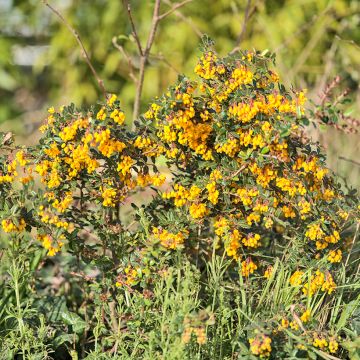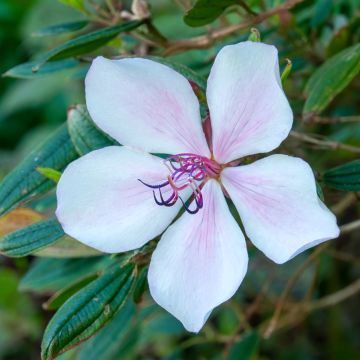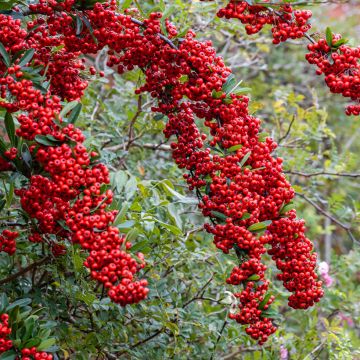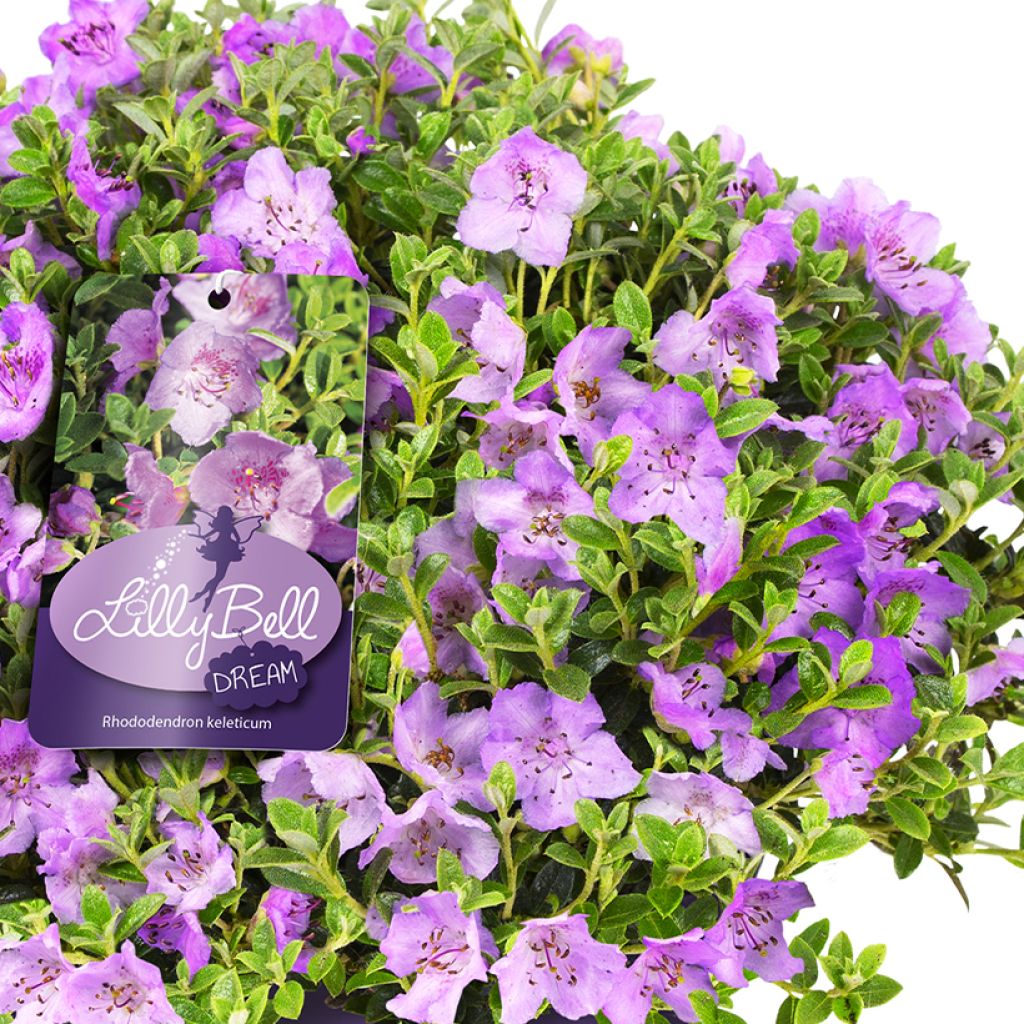

Rhododendron keleticum Lilly Bell Dream
Rhododendron keleticum Lilly Bell Dream
Rhododendron keleticum Lilly Bell® Dream
Rhododendron
This item cannot be shipped to the selected country
Delivery charge from €5.90
More information
Schedule delivery date,
and select date in basket
This plant carries a 24 months recovery warranty
More information
We guarantee the quality of our plants for a full growing cycle, and will replace at our expense any plant that fails to recover under normal climatic and planting conditions.
From €5.90 for pickup delivery and €6.90 for home delivery
Express home delivery from €8.90.
Does this plant fit my garden?
Set up your Plantfit profile →
Description
The Rhododendron keleticum Lilly Bell 'Dream' belongs to a new series of miniature cultivars, perfect for pots or borders, very floriferous and versatile. It produces a violet azalea flowering in May and June, completely covering the plant. Its evergreen foliage comprises small elliptical leaves, forming a rounded and neat tuft without needing maintenance. It also thrives in borders, full sun or partial shade, and moist and acidic soil.
The Rhododendron keleticum Lilly Bell® 'Dream' belongs to the Ericaceae family. It is derived from the botanical species Rhododendron keleticum. The Lilly Bell® series was introduced by the German nursery Hellwig in 2015. It consists of dwarf selections of existing species, which are Rhododendron campylogynum, R. keleticum, R. repens, R. ludolwi, and R. impeditum. These wild species have in common their dwarf size, a maximum height of 60 cm (24in), originating from China, and presenting foliage and flowering similar to azaleas. The Rhododendron keleticum is a montane species that grows at 3,000 to 3,900 m (10 to 13ft). Its growth is extremely slow: 2 to 3 cm (1in) per year! Its leaves are particularly small. Elliptical to lanceolate in shape, with an acuminate tip, they measure only 0.6 to 2 cm (1in) long and 0.3 to 1 cm (1in) wide. With a beautiful dark green colour, their surface is shiny, giving them a pronounced ornamental character.
The 'Dream' cultivar forms a dense cushion of small foliage, reaching a height of 40 cm (16in) and a width of 60 cm (24in) at maturity. The evergreen foliage is medium to dark green, very small and oval. Flowering begins in May and lasts a few weeks. The individual violet flowers are funnel or bell-shaped, solitary or clustered in small clusters. It is resistant to frost down to -23°C (1°F).
The Rhododendron Lilly Bell 'Dream' tolerates full sun or partial shade. It requires an acidic, fertile, well-drained substrate or soil that remains moist to wet. Plant it in a planter or pot, as well as in garden borders or as a ground cover. Pair it with other plants that prefer acidic or neutral soil, such as small Azaleas, ferns, hostas, colourful Corydalis, and Heuchera in partially shaded areas. Container cultivation requires regular watering with non-limestone water and specific fertilisers for acid-loving plants.
Report an error about the product description
Rhododendron keleticum Lilly Bell Dream in pictures
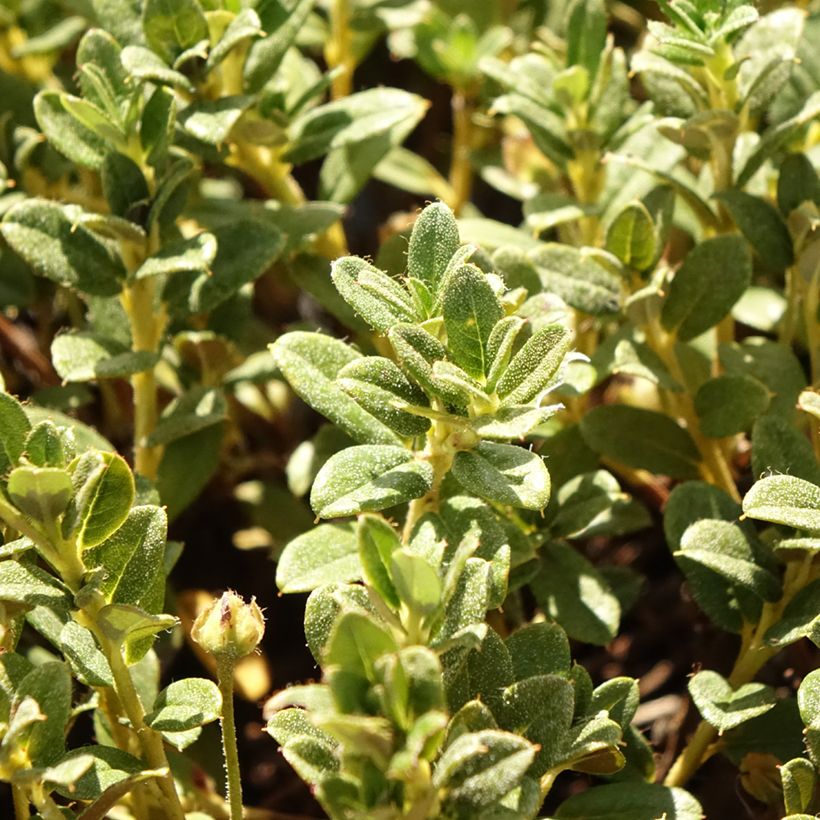

Plant habit
Flowering
Foliage
Botanical data
Rhododendron
keleticum
Lilly Bell® Dream
Ericaceae
Rhododendron
Cultivar or hybrid
Other Small Rhododendron
Planting and care
Plant the Rhododendron Lilly Bell 'Dream' in full sun or partial shade, protected from cold and drying winds, in a humus-bearing and light soil, with a tendency towards acidity (pH between 4.5 and 6). The soil should never dry out without being waterlogged. This variety dislikes heatwaves and dry atmospheres; it is a plant for a humid and cool climate. Like all plants of acid peat soil, it does not tolerate limestone soils, drought, heatwaves, or heavy soils saturated with water in winter. If the soil remains moist in summer, this rhododendron will also tolerate exposure to non-burning sun.
This dwarf variety can be grown anywhere, from full sun to complete shade, ensuring it is always well-covered with mulch. The roots are shallow and spread out to the sides for nutrients. Never plant them too deeply. The ideal mix is compost with light garden soil.
Maintenance consists of cutting off faded summer flowers and removing dead branches. Azaleas and Rhododendrons can sometimes be attacked by weevils that eat the edges of leaves and rootlets and by the famous "rhododendron lace bug", which often does not cause significant damage. Effective biological solutions are available today against weevils. Yellowing leaves (chlorosis) in Rhododendrons indicates poor assimilation of iron in the soil and causes premature plant death. While limestone (from the soil or watering water) is usually the cause, poorly drained soil or a deep planting hole can also explain the phenomenon.
Planting period
Intended location
Care
This item has not been reviewed yet - be the first to leave a review about it.
Evergreen shrubs
Haven't found what you were looking for?
Hardiness is the lowest winter temperature a plant can endure without suffering serious damage or even dying. However, hardiness is affected by location (a sheltered area, such as a patio), protection (winter cover) and soil type (hardiness is improved by well-drained soil).

Photo Sharing Terms & Conditions
In order to encourage gardeners to interact and share their experiences, Promesse de fleurs offers various media enabling content to be uploaded onto its Site - in particular via the ‘Photo sharing’ module.
The User agrees to refrain from:
- Posting any content that is illegal, prejudicial, insulting, racist, inciteful to hatred, revisionist, contrary to public decency, that infringes on privacy or on the privacy rights of third parties, in particular the publicity rights of persons and goods, intellectual property rights, or the right to privacy.
- Submitting content on behalf of a third party;
- Impersonate the identity of a third party and/or publish any personal information about a third party;
In general, the User undertakes to refrain from any unethical behaviour.
All Content (in particular text, comments, files, images, photos, videos, creative works, etc.), which may be subject to property or intellectual property rights, image or other private rights, shall remain the property of the User, subject to the limited rights granted by the terms of the licence granted by Promesse de fleurs as stated below. Users are at liberty to publish or not to publish such Content on the Site, notably via the ‘Photo Sharing’ facility, and accept that this Content shall be made public and freely accessible, notably on the Internet.
Users further acknowledge, undertake to have ,and guarantee that they hold all necessary rights and permissions to publish such material on the Site, in particular with regard to the legislation in force pertaining to any privacy, property, intellectual property, image, or contractual rights, or rights of any other nature. By publishing such Content on the Site, Users acknowledge accepting full liability as publishers of the Content within the meaning of the law, and grant Promesse de fleurs, free of charge, an inclusive, worldwide licence for the said Content for the entire duration of its publication, including all reproduction, representation, up/downloading, displaying, performing, transmission, and storage rights.
Users also grant permission for their name to be linked to the Content and accept that this link may not always be made available.
By engaging in posting material, Users consent to their Content becoming automatically accessible on the Internet, in particular on other sites and/or blogs and/or web pages of the Promesse de fleurs site, including in particular social pages and the Promesse de fleurs catalogue.
Users may secure the removal of entrusted content free of charge by issuing a simple request via our contact form.
The flowering period indicated on our website applies to countries and regions located in USDA zone 8 (France, the United Kingdom, Ireland, the Netherlands, etc.)
It will vary according to where you live:
- In zones 9 to 10 (Italy, Spain, Greece, etc.), flowering will occur about 2 to 4 weeks earlier.
- In zones 6 to 7 (Germany, Poland, Slovenia, and lower mountainous regions), flowering will be delayed by 2 to 3 weeks.
- In zone 5 (Central Europe, Scandinavia), blooming will be delayed by 3 to 5 weeks.
In temperate climates, pruning of spring-flowering shrubs (forsythia, spireas, etc.) should be done just after flowering.
Pruning of summer-flowering shrubs (Indian Lilac, Perovskia, etc.) can be done in winter or spring.
In cold regions as well as with frost-sensitive plants, avoid pruning too early when severe frosts may still occur.
The planting period indicated on our website applies to countries and regions located in USDA zone 8 (France, United Kingdom, Ireland, Netherlands).
It will vary according to where you live:
- In Mediterranean zones (Marseille, Madrid, Milan, etc.), autumn and winter are the best planting periods.
- In continental zones (Strasbourg, Munich, Vienna, etc.), delay planting by 2 to 3 weeks in spring and bring it forward by 2 to 4 weeks in autumn.
- In mountainous regions (the Alps, Pyrenees, Carpathians, etc.), it is best to plant in late spring (May-June) or late summer (August-September).
The harvesting period indicated on our website applies to countries and regions in USDA zone 8 (France, England, Ireland, the Netherlands).
In colder areas (Scandinavia, Poland, Austria...) fruit and vegetable harvests are likely to be delayed by 3-4 weeks.
In warmer areas (Italy, Spain, Greece, etc.), harvesting will probably take place earlier, depending on weather conditions.
The sowing periods indicated on our website apply to countries and regions within USDA Zone 8 (France, UK, Ireland, Netherlands).
In colder areas (Scandinavia, Poland, Austria...), delay any outdoor sowing by 3-4 weeks, or sow under glass.
In warmer climes (Italy, Spain, Greece, etc.), bring outdoor sowing forward by a few weeks.

































